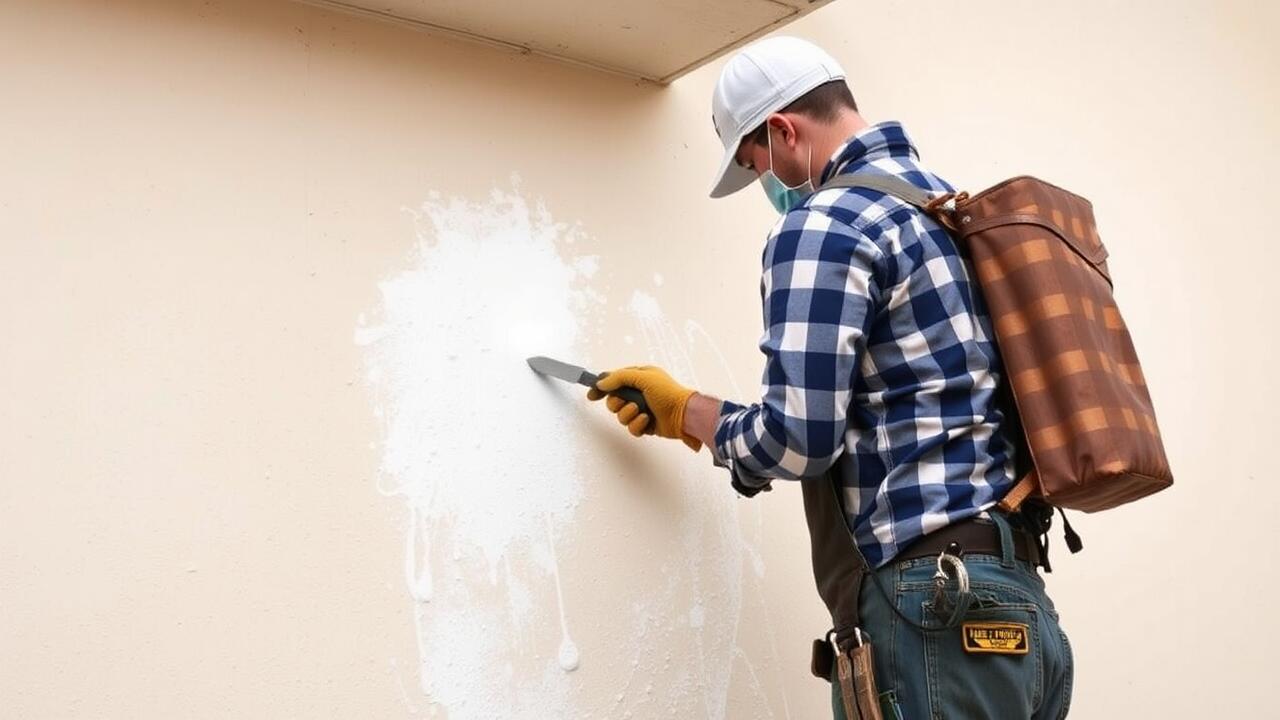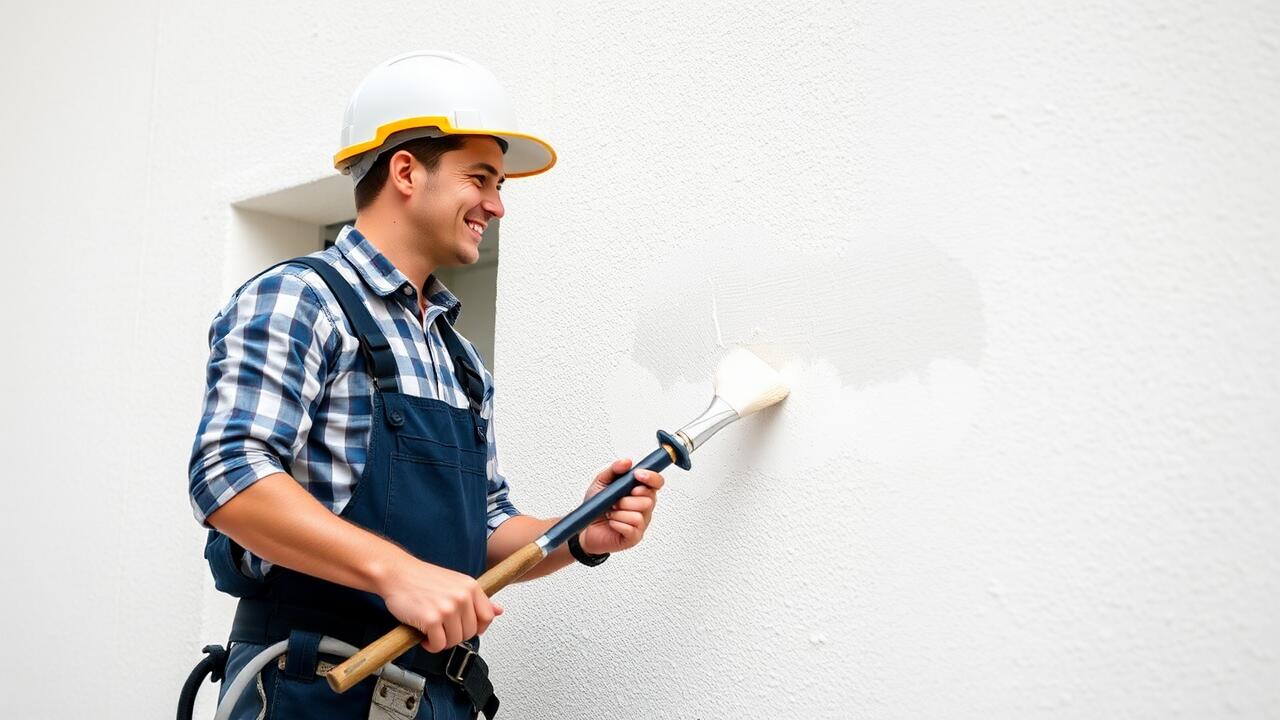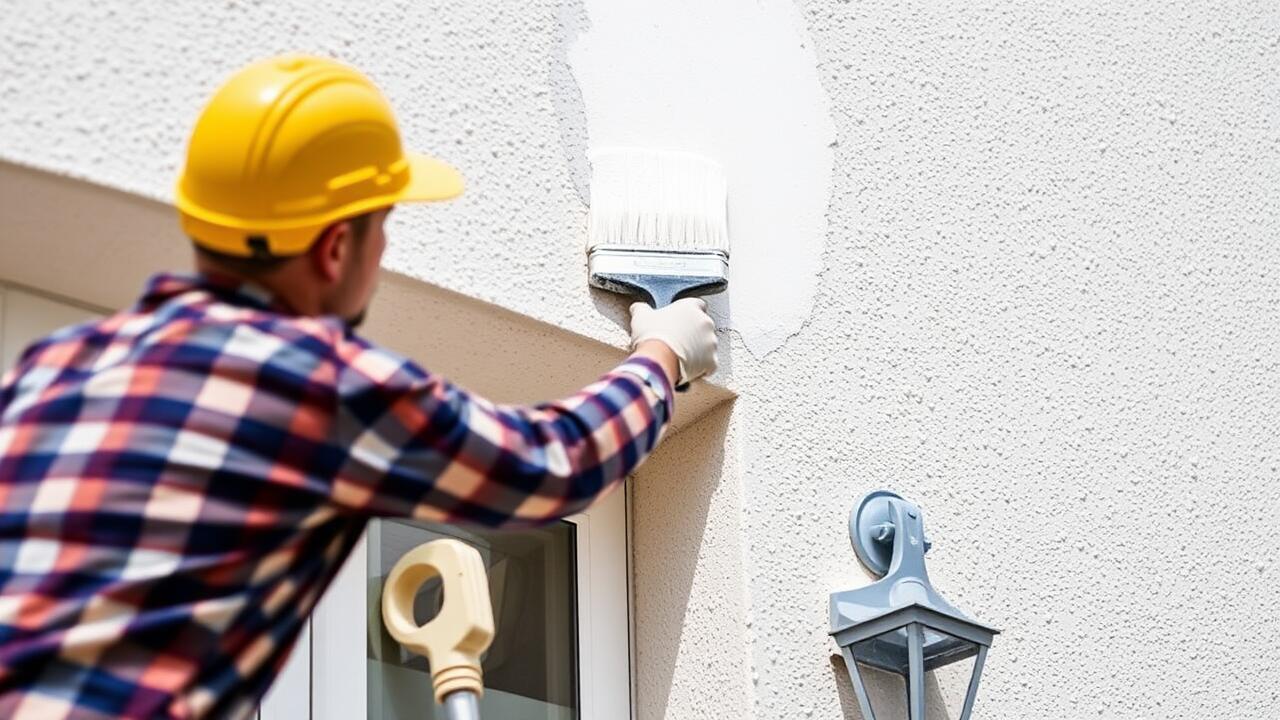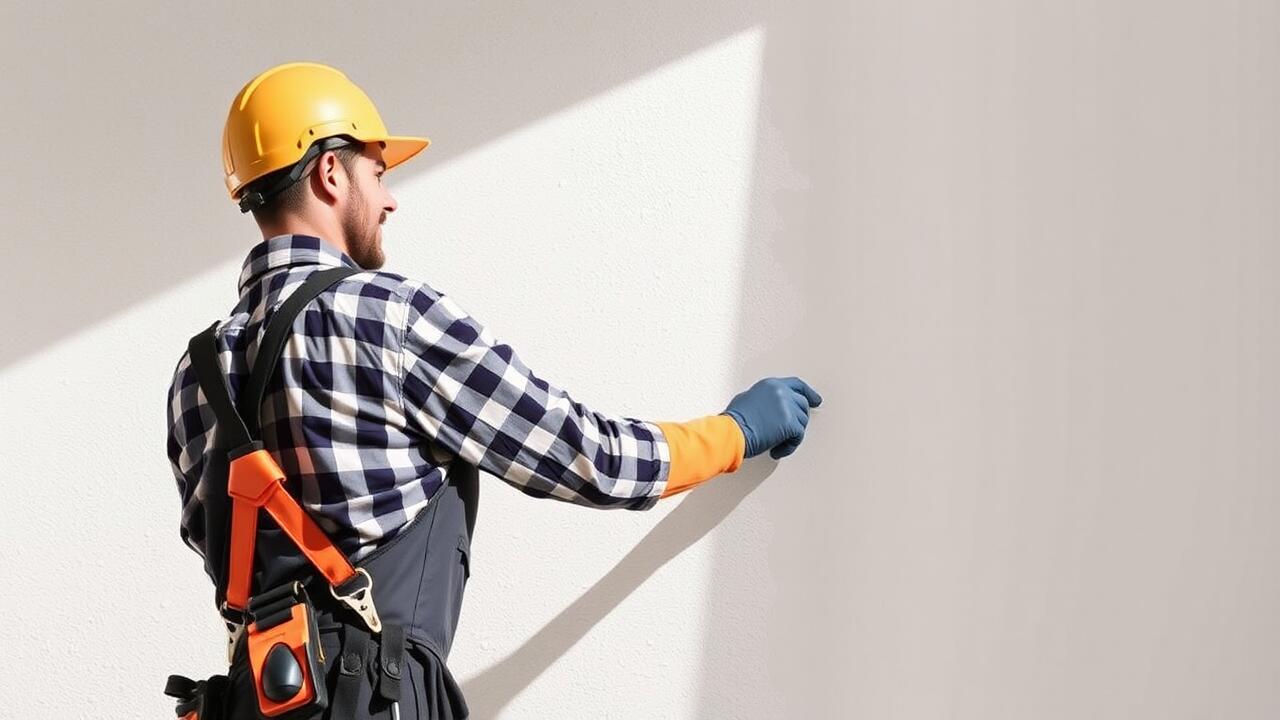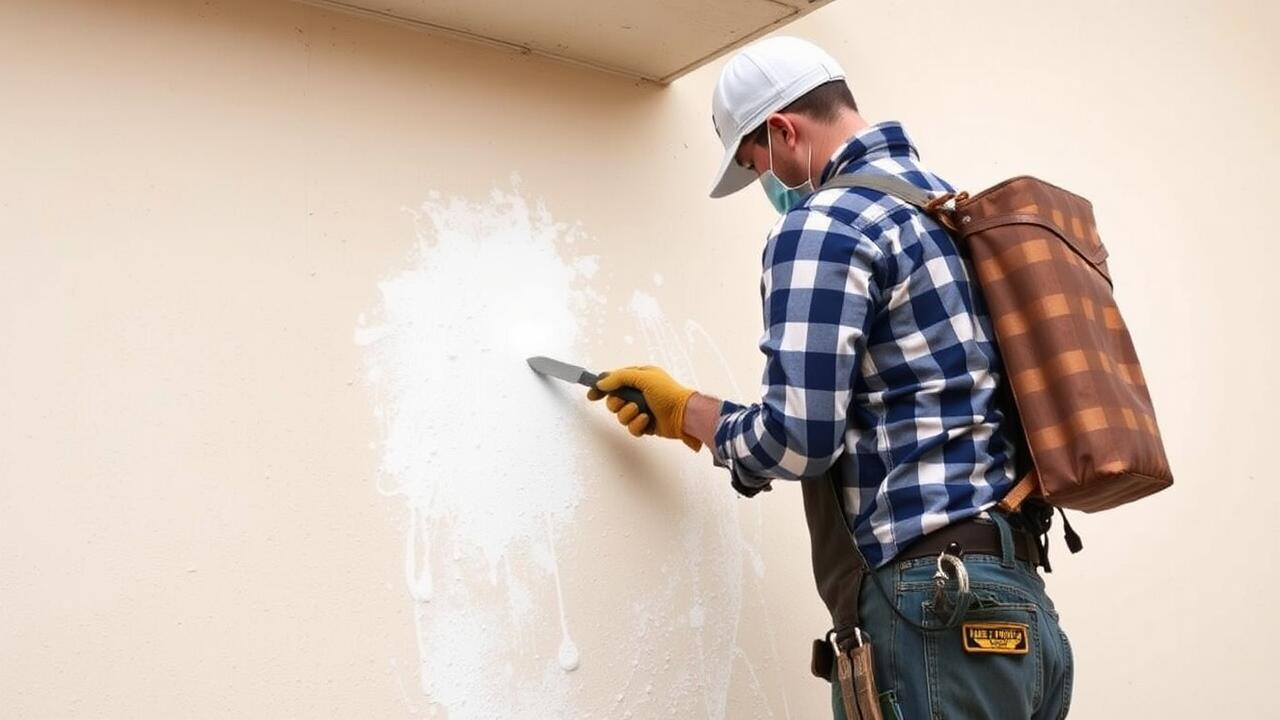
Creating Custom Textures
Creating custom textures for stucco painting allows homeowners to express their unique style. Various techniques can be employed to achieve different effects, from a smooth finish to something more tactile and intricate. Popular options include the slap brush technique, which creates a rough, natural appearance, and the skip trowel method, known for its subtle, layered look. These methods can transform ordinary surfaces into eye-catching focal points, enhancing the aesthetic appeal of homes in Crenshaw, Los Angeles, where stucco is a favored exterior material.
Experimenting with tools such as sponges, brushes, and combs can add depth and dimension to custom textures. Each tool produces distinctive patterns, giving flexibility to the design process. It’s crucial to practice on a sample area before committing to a larger wall. This allows for adjustments and ensures that the desired outcome is achieved. Embracing creative techniques not only personalizes the home but also contributes to the charm of the neighborhood, benefiting the overall character of properties in Crenshaw, Los Angeles.
Methods for Achieving Unique Patterns
Achieving unique patterns in textured stucco painting involves experimenting with different application techniques. One popular method is the use of a paint roller with varying nap lengths. This creates different depths and textures as the roller moves across the surface. Another effective approach is the use of brushes for stippling or faux finishes, allowing for intricate patterns that add character to the wall. Combining these techniques can lead to distinctive looks that enhance the aesthetic appeal of any structure.
In Crenshaw, Los Angeles Stucco Painting, combining various tools and materials is essential for creating custom textures. Specialty combs and trowels can introduce unique designs that mimic natural elements, such as stone or wood. Artists can create swirling patterns by manipulating the wet stucco with a trowel. This method not only adds visual interest but also helps to ensure that each surface reflects the individuality of the property's architecture.
Safety Precautions
When engaging in any stucco painting project, it's crucial to prioritize safety. Start by wearing appropriate personal protective equipment, including goggles, gloves, and a mask to guard against dust and fumes. Proper ventilation in the workspace protects against harmful inhalation, especially when using chemical-laden paints or texture additives. If working from heights, use sturdy ladders and harnesses to minimize the risk of falls. Tackling a project like Venice, Los Angeles Stucco Painting can be demanding, so ensure you have the right tools and setup to maintain a safe environment.
In addition to personal safety gear, consider the surrounding environment. Clear the area of any debris and cover nearby plants or furniture with drop cloths to prevent paint splatter. Be mindful of weather conditions, as humidity and temperature can affect both safety and the painting outcome. If working in areas with potential electrical hazards, turn off power sources to avoid accidents. Following these precautions not only protects your well-being but also enhances the quality of the finished project.
Important Safety Measures to Follow
Before embarking on any stucco painting project, it is crucial to prioritize safety. Ensure you wear appropriate personal protective equipment, including gloves, goggles, and a mask to guard against dust and paint fumes. Working at heights may require the use of scaffolding or ladders, which should be stable and properly secured to prevent accidental falls. If you are unfamiliar with these tools, consider seeking assistance or hiring a professional.
Environmental conditions also play a significant role in safety. Check the weather forecast before starting your work. Avoid painting in wet or humid conditions, as moisture can compromise the paint's adhesion and longevity. When engaging in projects like Venice, Los Angeles stucco painting, ensure you have adequate ventilation to disperse paint fumes and maintain airflow in enclosed spaces. Being mindful of these safety measures will protect both you and the integrity of your work.
Maintenance Tips for Longevity
To ensure the longevity of textured stucco surfaces, regular maintenance is essential. Inspect the painted areas periodically for signs of wear or damage. Look for cracks, peeling, or areas where dirt accumulates. Addressing these issues promptly will prevent further deterioration. When cleaning, use a gentle pressure washer or a soft brush with mild detergent to avoid damaging the texture. Being mindful during the cleaning process also helps maintain both the appearance and integrity of the paint.
In Pacific Palisades, Los Angeles stucco painting is popular due to the unique aesthetic it adds to homes. Maintaining this look requires a bit of care. Repainting may be necessary every few years, especially if fading occurs. Check local climate conditions, as those can affect the paint's longevity. Keep trees and shrubs trimmed back to minimize debris falling on the stucco. Following these tips will help preserve the beautiful finish that makes homes in this area stand out.
How to Care for Painted Stucco
Caring for painted stucco involves regular inspection and cleaning to maintain its appearance and longevity. Start by checking for any signs of wear, such as fading or flaking paint. A gentle wash using a mixture of water and mild soap can help remove dirt and grime without damaging the surface. For tougher stains, a soft-bristle brush works well to avoid scratches. Pay attention to any cracks or chips that may develop over time and address them promptly to prevent moisture intrusion.
In areas like Crenshaw, Los Angeles, stucco painting can be particularly susceptible to the elements. Applying a sealant can help protect against moisture and UV damage. It is advisable to touch up any areas that may show wear, ensuring consistent color and texture throughout. Regular maintenance not only enhances the aesthetic appeal but also extends the life of the paint, keeping your stucco looking fresh and vibrant for years to come.
FAQS
What are the best techniques for creating custom textures on stucco?
Some popular techniques for creating custom textures include using a trowel for a hand-applied finish, sponging for a softer look, and a brush for a more pronounced pattern. Experimenting with different tools and methods can help achieve the desired effect.
How do I achieve unique patterns while painting stucco?
Unique patterns can be achieved by combining different tools and techniques such as stippling, dragging, or swirling. Using a stencil can also help create intricate designs, while varying the application pressure can lead to diverse texture effects.
What safety precautions should I take when painting stucco?
Important safety precautions include wearing protective goggles and a mask to avoid inhaling dust and fumes, using gloves to protect your hands, and ensuring proper ventilation in the work area to minimize exposure to harmful chemicals.
What are some important safety measures to follow during the process?
Always read and follow the manufacturer's instructions on paint products, secure the work area to prevent slips and falls, and use ladders safely by ensuring they are stable and positioned correctly.
How can I care for my painted stucco to ensure its longevity?
Regular maintenance involves cleaning the surface with a mild detergent, inspecting for any signs of damage or wear, and promptly addressing issues like cracks or peeling paint. Additionally, consider reapplying a protective sealant every few years to prolong the finish.
